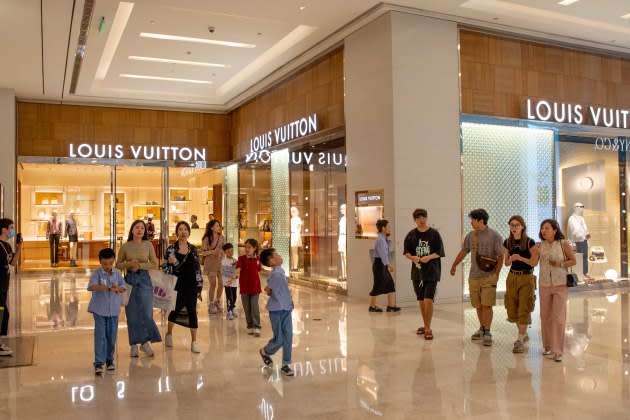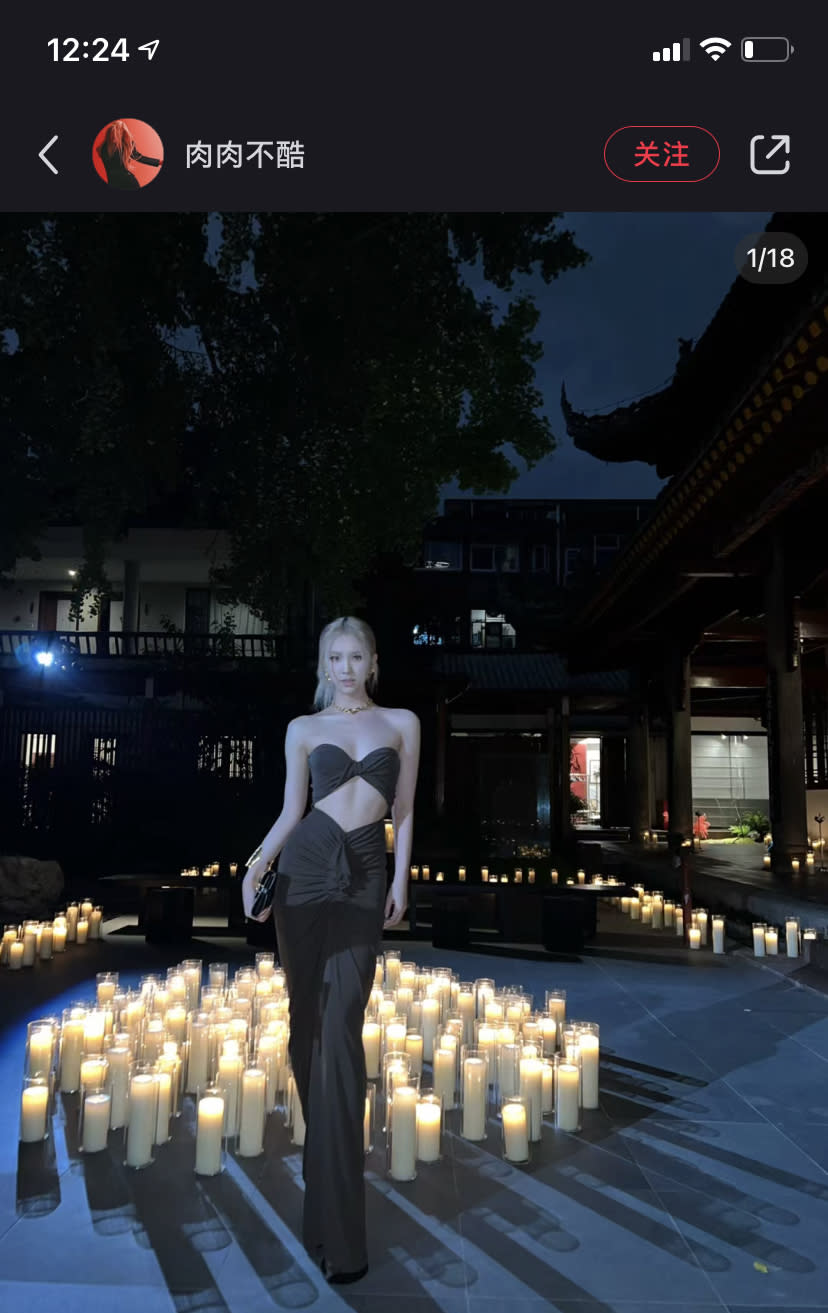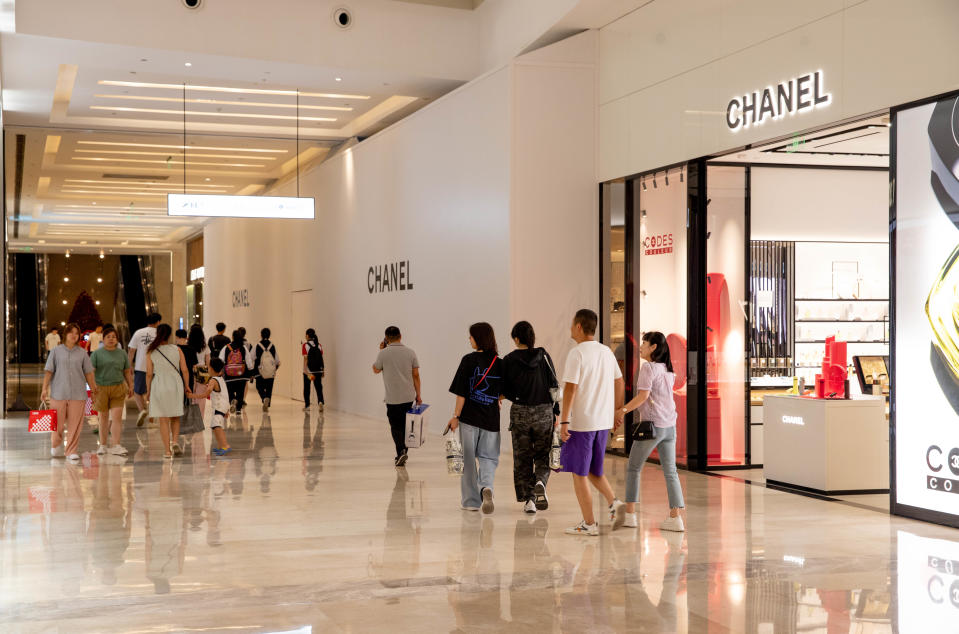What to Watch: Luxury Bets on China’s Wealthy Shoppers to Maintain Growth

China‘s slower-than-expected economic recovery — dented by deflation woes, slow retail sales growth, rising youth unemployment rate and fragile consumer sentiment — means that most consumers will likely cut back on luxury spending to brace for trying times ahead.
Globally speaking, Bernstein believes that luxury spenders will likely sober up from a “post-pandemic euphoria,” or revenge spending, in the second half of 2023.
More from WWD
The trend is already apparent in the U.S. and Europe as sales continue to normalize. Bernstein expects the luxury market to grow at 13 percent this year and by 11 percent in 2024.
According to Bernstein, in China’s version of this post-COVID-19 reality, luxury growth will come from “rich, young and high-end Chinese luxury goods consumers.”
“The top-end consumers will continue to become more and more important, supported by a continued income and wealth polarization and a heightened effort by brands to lure them into their arms,” observed Bernstein’s Maria Meita in a recent research note.
The recent round of group travel resumption, including Japan and the U.S., means that more wealthy shoppers will soon flood retail destinations in New York, Tokyo, Paris and Milan. According to Bernstein, due to a 30 percent pricing difference and tax-free incentives, Chinese shoppers will allocate 50 percent of luxury spending abroad — but this is below the 70 percent before the pandemic.
Onshore spending remains crucial, but market realities mean brands and retailers will now orient marketing efforts around the ultra-rich. According to Morgan Stanley’s estimate, around 1 percent of customers will account for as much as 40 percent of sales in some key luxury malls in China.
“Many luxury brands have recognized the opportunity to focus on their VICs through sophisticated CRM [customer relationship management] programs,” said Jacques Roizen, managing director of consulting at Digital Luxury Group.
Roizen expects the growth in the number of the ultra-rich will fuel a “comfortable growth” for the luxury industry in the coming years.
“You rarely see brands talk about the Chinese middle class anymore,” observed Weiying Guo, associate director at Cushman & Wakefield.
“It is already widely believed that if your annual income is less than 3 million renminbi [or approximately $412,000], you are not the target audience anymore,” Guo added.
To scale up clienteling services, mega brands such as Louis Vuitton, Dior and Chanel have quietly opened VIP salons in key China markets.
Ultra-exclusive retail experiences are not enough. To lure in key shoppers, brands have been putting on exclusive trunk shows in far-flung locations and hosting exclusive dinners where clients can rub shoulders with celebrities.

A guest at a recent Saint Laurent VIP event in Chengdu.
Repeat runway shows, including Dior’s Shenzhen spectacle and Bottega Veneta’s Beijing showcase, are rounded out with clienteling initiatives where big-ticket orders are placed while sipping Champagne.
Flaunting exclusive experiences quickly became the new status symbol among the ultra-rich. An archetypical Hermès VIP refers to themselves by the nickname “horse breeders”; an elite shopper also takes pride in becoming a KOC, or key opinion customer, for the brand on social media.
To better cater to wealthy individuals outside of retail hubs such as Beijing, Shanghai and Shenzhen, luxury brands have extended their retail footprint to second-tier cities.
“Shoppers that are used to buying other premium brands usually quickly converted to buying luxury products,” according to Raymond Cao, general manager at David Plaza in Zhengzhou, a second-tier city in Central China. The shopping mall features top luxury players such as Louis Vuitton, Hermès, Loro Piana and Gucci.
Early next year, Chanel will open its first central China store at the Zhengzhou luxury mall.

Shoppers walk past a soon-to-be-opened Chanel boutique in David Plaza, Zhengzhou.
“The wealthy customer base is eager to be educated by luxury labels. We are a market of over 100 million people, there’s a lot of potential,” said Cao.
For the first half of 2023, footfall at David Plaza increased 47 percent compared to the same time last year. Retail sales jumped 60 percent, driven by luxury sales.
There are obvious incentives for lower-tiered cities to attract luxury fashion brands. A luxury facelift doubles as proof of the city’s consumption vitality.
For example, Hangzhou government officials recently proudly revealed that sales at the city’s Chanel store, the only one in Zhejiang province, reached 1.8 billion renminbi, or $246.8 million, in 2022.
In the northern second-tier city of Tianjin, news quickly spread on social media that sales at its first Hermès store reached 30 million renminbi on the opening day. “Tianjiners are known for being untamed shoppers,” one zealous customer proudly proclaimed on Xiaohongshu.
Best of WWD

